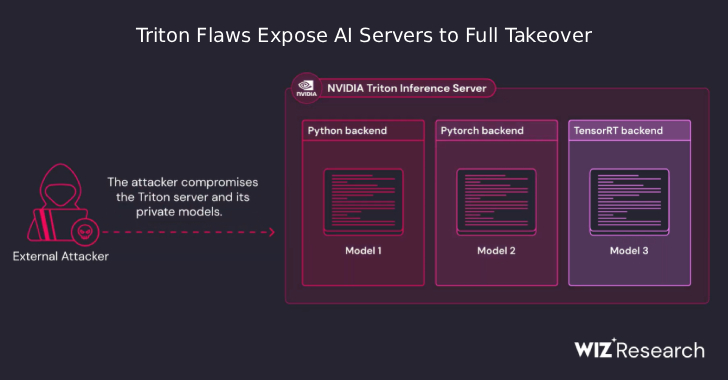
What Is a Disaster Recovery Program?
Disasters, both natural and man-made, can strike at any moment, posing a significant threat to businesses, organizations, and individuals. From earthquakes and hurricanes to cyberattacks and data breaches, these events can disrupt operations, damage assets, and result in significant financial losses. To mitigate the impact of such incidents, a well-structured Disaster Recovery Program (DRP) is essential. In this article, we will delve into what a Disaster Recovery Program is, why it’s crucial, and how organizations can develop effective DRPs to safeguard their continuity.
Understanding Disaster Recovery Program (DRP)
A Disaster Recovery Program, often abbreviated as DRP, is a comprehensive strategy and set of procedures designed to minimize downtime and data loss in the event of a disaster. The primary objective of a DRP is to ensure the rapid restoration of critical business functions and essential data following a disaster. Disasters can take various forms, including natural disasters like earthquakes, floods, and wildfires, as well as man-made incidents such as cyberattacks, power outages, and hardware failures.
A well-designed DRP encompasses more than just data backup and recovery; it encompasses the entire process of planning, testing, and implementing measures to protect an organization’s assets and operations. It outlines the steps to be taken before, during, and after a disaster to ensure that the organization can recover swiftly and efficiently.
Why Is a Disaster Recovery Program Crucial?
The importance of a Disaster Recovery Program cannot be overstated, as it plays a vital role in preserving an organization’s continuity and reputation. Here are some compelling reasons why every business and organization should have a well-defined DRP in place:
- Business Continuity:
A disaster can disrupt normal business operations for an extended period, resulting in significant financial losses. A DRP ensures that essential business functions can continue, even in the face of adversity, reducing downtime and minimizing revenue losses.
- Data Protection:
Data is the lifeblood of modern organizations. A robust DRP includes data backup and recovery strategies to safeguard critical data. Losing sensitive information due to a disaster can have severe legal, financial, and reputational consequences.
- Regulatory Compliance:
Many industries have stringent regulations regarding data protection and business continuity. Non-compliance can lead to hefty fines and legal consequences. A well-implemented DRP helps ensure compliance with these regulations.
- Reputation Management:
A company’s reputation is closely tied to its ability to withstand disasters. Customers, partners, and stakeholders trust organizations that are prepared for the unexpected. A DRP can help protect and enhance an organization’s reputation.
- Competitive Advantage:
Having a robust DRP can be a competitive advantage. Customers and clients are more likely to choose a business that demonstrates its commitment to continuity and data protection.
- Cost Savings:
While implementing a Disaster Recovery Program involves some upfront costs, it can save a significant amount of money in the long run. The cost of downtime, data loss, and recovery efforts after a disaster can be astronomical compared to the investment in a DRP.
- Peace of Mind:
Knowing that a plan is in place to handle disasters provides peace of mind to business owners, executives, and employees. It reduces anxiety and allows for more confident decision-making during a crisis.
Key Components of a Disaster Recovery Program
A well-structured Disaster Recovery Program consists of several key components, each contributing to the overall preparedness and resilience of an organization. These components include:
- Risk Assessment:
The first step in developing a DRP is identifying potential risks and vulnerabilities. This involves assessing both internal and external threats, such as natural disasters, cybersecurity risks, and infrastructure vulnerabilities.
- Business Impact Analysis (BIA):
A BIA helps determine the criticality of various business functions and data. It prioritizes these functions and data based on their importance to the organization’s operations.
- Continuity Planning:
Once the critical functions and data are identified, a continuity plan is developed. This plan outlines the strategies and procedures to maintain essential operations during and after a disaster.
- Data Backup and Recovery:
A DRP includes robust data backup and recovery mechanisms. This may involve regular data backups, off-site storage, and the ability to restore data quickly in the event of data loss.
- Communication Plan:
Effective communication is crucial during a disaster. A DRP should include a communication plan that outlines how the organization will keep employees, customers, and stakeholders informed during a crisis.
- Employee Training:
Employees play a vital role in disaster recovery. They should be trained on their roles and responsibilities in the event of a disaster. Regular training and drills ensure that everyone knows what to do.
- Testing and Maintenance:
A DRP is not a one-time effort. It should be regularly tested and updated to reflect changes in technology, operations, and potential risks. Testing helps identify weaknesses and areas for improvement.
- Vendor and Supplier Relationships:
Many organizations rely on external vendors and suppliers. It’s important to include them in the DRP to ensure a coordinated response to disasters that may affect the supply chain.
Developing an Effective Disaster Recovery Program
Creating an effective Disaster Recovery Program requires careful planning and a commitment to preparedness. Here are the steps to follow when developing a DRP:
- Establish a DRP Team:
Appoint a dedicated team responsible for creating and maintaining the DRP. This team should include individuals with expertise in IT, security, operations, and legal compliance.
- Conduct a Risk Assessment:
Identify potential threats and vulnerabilities that could disrupt business operations. Consider both natural and man-made disasters, as well as cybersecurity risks.
- Perform a Business Impact Analysis (BIA):
Determine the critical functions, processes, and data that are essential for business continuity. Prioritize them based on their importance to the organization.
- Develop Continuity Plans:
Create detailed plans for maintaining critical business functions during a disaster. These plans should outline procedures, responsibilities, and resources needed for continuity.
- Implement Data Backup and Recovery:
Establish a robust data backup and recovery strategy. Ensure that critical data is regularly backed up and can be restored quickly in case of data loss.
- Create a Communication Plan:
Develop a communication plan that outlines how the organization will communicate with employees, customers, suppliers, and other stakeholders during a disaster.
- Provide Employee Training:
Train employees on their roles and responsibilities in the event of a disaster. Conduct regular drills and exercises to ensure everyone is familiar with the DRP.
- Test and Update the DRP:
Regularly test the DRP to identify weaknesses and areas for improvement. Update the plan as needed to reflect changes in technology and operations.
- Coordinate with Vendors and Suppliers:
Include external vendors and suppliers in your DRP to ensure a coordinated response to supply chain disruptions.
- Document and Maintain:
Document all aspects of the DRP, including policies, procedures, and contact information. Keep the DRP up to date and accessible to all relevant personnel.
Conclusion
A Disaster Recovery Program is a critical component of any organization’s risk management strategy. It provides a structured approach to dealing with disasters, ensuring that essential business functions can continue, data is protected, and communication remains effective during and after a crisis. While developing a DRP requires time and effort, the investment in preparedness is well worth it, as it can make all the difference.
Contact Cyber Defense Advisors to learn more about our Disaster Recovery Program solutions.





